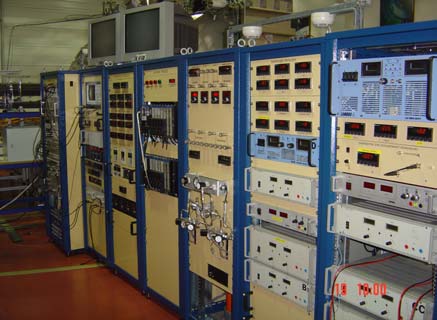P.I.V.O.I.N.E. 2G
Propulsion Ionique pour le Vol Orbital avec Interprétation et Nouvelles Expériences
Ionic Propulsion for Orbital Flight with Interpretation and New Experiences – National Plasma Propulsion Test Facility
Contact : Pascal LASGORCEIX
PLASMA PROPULSION BY HALL EFFECT
Among the various technologies of electric space propulsion, the SPT (Stationary Plasma Thruster) type plasma thrusters, also called Hall effect thrusters, were proposed, designed and studied in the laboratory for the first time in 1962 by A. I. MOROZOF in the Soviet Union. These thrusters were tested in space from 1972 by the Russians. After the fall of the Soviet Union, Russian laboratories opened up to the West and at the end of the 1980s, the first contacts were established between CNES, SNECMA and A.I. MOROZOF. It soon became clear that France needed to acquire the knowledge and expertise of this technology as an alternative to chemical propulsion in specific applications such as attitude control of satellites in orbit or orbit transfer.
The national test facility PIVOINE_2G is used to implement, study and improve electric plasma motors of the Hall effect type. These motors are used in space propulsion for satellite altitude control, orbit transfer and interplanetary travel.
Since 1977, this test facility has been the main experimental tool of the Research Group on Plasma Propulsion, which associates CNRS, Universities, CNES and SNECMA. A team of 3 IT people is in charge of the operational operation of the bench and the organisation of test campaigns for the GDR.
 View of the national test medium PIVOINE_2G |
 Facility control system |
A 2-stage cryopumping system of the bench optimized for Xenon allows to maintain a pressure of 2 10-5 mbar Xe for a gas flow in the engine of 21mg/s with the 2 stages in service. It has a thermal capacity of 3 and 8kW respectively for each of the 2 stages. The bench is equipped, in basic diagnostics, with a single-axis thrust balance in the range 0-1200 eV, an electrostatic probe system, an iconic multi-probe rotating arm, a simultaneous DC-200 kHz and DC-4GHz multichannel acquisition system and a mass spectrometry system for vacuum analysis. Other complementary diagnostics are carried out by the various GDR teams: LIF, coherent scattering, emission spectrometry, infrared thermography, etc.
 PPSX000ML engine equipped for LIF measurements |
 PPS 100ML, target shooting BNS|O2 |
